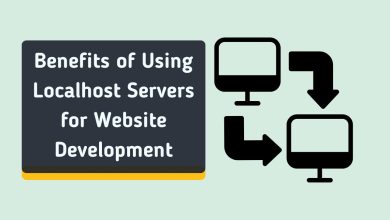Should You Use Cache on Your WordPress Websites?
The loading speed of a website is a great user experience concern and one of the Google ranking factors. Visitors expect webpages to load instantaneously, and anything slower can lead to frustration and lost traffic.
For WordPress websites, which are known for their dynamic nature, achieving optimal speed can be a challenge. So, people use caching plugins to improve and optimise the loading speed.
But did you know there are also cons to using caching plugins? Maybe not. Let’s find out whether you should use cache on your WordPress site.
What is Caching, and How Does It Benefit Your WordPress Site?
Caching essentially creates a temporary storage space for website data. When a visitor accesses your WordPress site for the first time, the server retrieves information from the database, combines it with themes and plugins, and generates the webpage you see. This process, while dynamic and allowing for fresh content, can be resource-intensive for the server, especially with high traffic.
Caching creates a static copy of the webpage after the initial generation. Subsequent visitors requesting the same page are then served the pre-rendered version from the cache, significantly reducing server load and speeding up page load times. Here’s a breakdown of the benefits caching offers for your WordPress website:
Improved User Experience: Faster loading times lead to a more enjoyable experience for visitors. Studies show that a one-second delay in page load can result in a 7% drop in conversions. Caching ensures your site feels responsive and keeps visitors engaged.
Enhanced SEO: Search engines like Google prioritise fast-loading websites in their rankings. By improving website speed, caching can indirectly boost your SEO and attract more organic traffic.
Reduced Server Load: Caching minimizes the number of database queries and server processes required to display a webpage. This translates to a lighter workload for your server, improving overall stability and performance.
Increased Scalability: As your website grows and attracts more traffic, caching can help your server handle the additional load more efficiently. This allows your site to scale effectively without compromising speed.
Also Read: Top 5 WordPress Errors and Their Solutions
Different Types of Caching for WordPress
There are various types of caching applicable to WordPress websites, each serving a specific purpose:
Page Caching: This is the most common type of caching and stores a complete copy of the entire rendered webpage. When a visitor requests a page, the cached version is delivered, significantly reducing load times.
Object Caching: Instead of caching entire pages, object caching stores specific elements like database queries, menus, or widgets. This allows for faster page generation as frequently accessed elements are readily available.
Browser Caching: This leverages the visitor’s web browser to store static files like images, CSS, and JavaScript. This eliminates the need to download these files repeatedly, improving subsequent page loads for returning visitors.
Implementing Caching on Your WordPress Site
There are two primary ways to implement caching on your WordPress website:
Server-Level Caching: Many web hosting providers offer built-in caching solutions. These are often easy to activate through your hosting control panel.
Caching Plugins: WordPress offers a vast selection of caching plugins that provide granular control over caching options. Popular choices include WP Rocket, W3 Total Cache, Wp-Optimize and Autoptimize. These plugins offer various features like page caching, object caching, minification (reducing file sizes), and CDN (Content Delivery Network) integration for further performance optimisation.
Problems With Cached Websites
1. Dynamic Content: Caching presents challenges with dynamically generated content on WordPress sites. While caching improves load times by serving saved static versions of pages, dynamic content like user-specific greetings or personalized recommendations might not update correctly for each visitor. This discrepancy can lead to a less personalized user experience and potentially display inaccurate information.
2. E-Commerce Functionality: E-commerce-enabled websites tend to have issues with caching because of the dynamic nature of constantly changing content. Prices, stock, and cart contents must be updated in real time continuously based on user activity. Caching has the unintended consequence of caching stale product data, which causes inconsistencies between what is presented to users on the site and what is really available for sale.
3. User-Specific Content for Logged-In Users: Another limitation of caching on WordPress sites arises when dealing with logged-in users who have access to personalised content or account information. Caching these user-specific elements may result in one user viewing another’s data or failing to see their individualized settings accurately reflected on the site.
4. Forms and Comments: Sites that are very dependent on interactive features such as forms and comments also have limitations with caching. Forms that need real-time validation or submission processes might not work properly when delivered from the cache. Similarly, comments added dynamically by users might not be displayed immediately if they are cached in versions of pages.
5. Cache Invalidation: One of the major challenges in utilizing caching is proper cache invalidation methods. When new content is added or current content is changed, the cache must be invalidated or updated appropriately so that visitors see the latest information. If caches are not invalidated properly, users may view old content, which can cause confusion or errors on the site.
Also Learn: How do I Fix the Headers already sent warning in WordPress?
Conclusion and Alternative Solutions
Site owners must strike a balance between performance optimisation through caching and ensuring that dynamic elements function as intended for all visitors, including logged-in users and those interacting with forms and comments.
Implementing techniques such as fragment caching for specific dynamic components, configuring cache-clearing mechanisms upon content updates, and conducting regular testing of cached pages can help mitigate these limitations and maintain a seamless user experience across all aspects of the website’s functionality.

